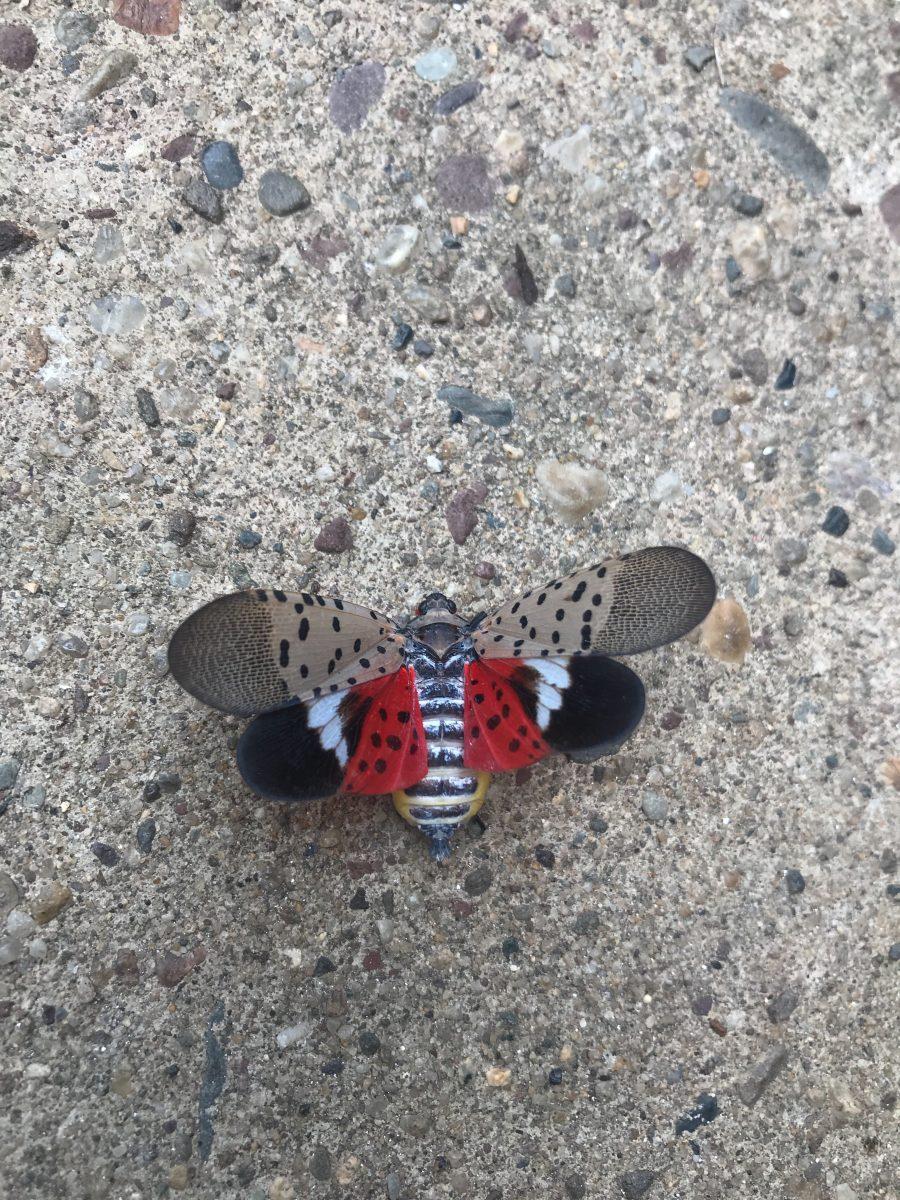The spotted lanternfly, a red-winged insect native to southeast Asia, is wreaking havoc on trees and on agricultural production across eastern Pennsylvania.
According to Clint J. Springer, Ph.D., associate professor of biology and St. Joe’s director of environmental science and sustainability studies, these insects have already started laying eggs ahead of the fall season.
“Now that it’s starting to lay eggs,” Springer said. “This is when the fight really starts.”
The fight includes an order of quarantine of 14 counties in southeastern Pennsylvania issued by the Pennsylvania Department of Agriculture in May 2018. The Pennsylvania Department of Agriculture, the U.S. Department of Agriculture (USDA) and researchers at the Pennsylvania State University have teamed up to fight the spotted lanternfly invasion.
In an effort to prevent the spread of the insect, the order requires that anyone who leaves any quarantined counties must inspect their vehicle, or anything they are transporting out, for spotted lanternflies, eggs, larvae and honeydew.
According to the Pennsylvania Department of Agriculture, the spotted lanternfly—which is native to Vietnam, China and India—will lay about 30 to 50 eggs each in the fall. The larvae produce honeydew which has caused damage to grape, apple, hops and hardwood industries in Pennsylvania and New Jersey.
St. Joe’s campus is in Philadelphia County and Montgomery County, both of which are quarantine areas. According to Springer, the insects lay eggs on the trunks of trees, allowing the larvae to feed on the plant tissue as they grow and move through the stages of development into an adult insect.
“Their larva can do a lot of damage to the trees and is really more of a concern than the adults,” Springer said.
Rhea Cuevas ’22 said she is frustrated by the spotted lanternflies on campus and has seen the bugs at home in Ardmore.
“I hate spotted lanternflies [and] I think they are the worst things in the world,” Cuevas said. “It’s really hard to get rid of them. They eat up everything they can.”
Julie M. Urban, Ph.D., associate research professor in the department of entomology at Penn State is part of a research team that is studying the impact of the spotted lanternfly in eastern Pennsylvania.
Urban said the biodiversity can be greatly affected by the spotted lanternfly since these insects are known to feed on more than 70 different species of trees and plants. Additionally, Urban said the spotted lanternflies are affecting the profits of vineyards in Pennsylvania.
“There’s a potential for it to be damaging to other plants, but it hasn’t been shown yet to be as damaging to other plants as it is to grapevines,” Urban said.
Shannon Powers, deputy communications director at the Pennsylvania Department of Agriculture said in Berks County, where the insect was first discovered in late 2014, one vineyard lost 90% of its crops and 90% of its vines were destroyed in 2018.
“It’s a tremendous threat to our economy,” Powers said. “We believe it threatens 18.5 billion dollars worth of popular agricultural products like grapes, hardwoods [and] tree fruits like apples and peaches.”
Powers said the Department of Agriculture issued about a million permits to companies across the U.S. and Canada, and those companies have trained their employees to recognize the spotted lanternfly in any stage of its life and how to prevent them from spreading.
Urban said it is important to fight the invasive bugs in ways that are effective but not excessive, and she advised against spraying dish soap or other pesticides on their property inappropriately because it could affect other organisms.
“What the government agencies are using to treat, ‘Tree of Heaven,’ is systemic insecticide to get either injected or sprayed onto the tree, and the tree takes that into its tissue and then any lanternfly coming through and feeding on it then gets poisoned,” Urban said.
Both the Pennsylvania Department of Agriculture and researchers at Penn State advise that the best thing to do is to kill spotted lanternflies on sight. Springer said eggs and larvae on the trunks of trees should also be destroyed.
“If you see any egg mats on trees, scrape them off and put them in alcohol, and that will kill the egg mats,” Springer said. “They look like a gray mat on the side of a tree. And killing them, that actually will have a really big impact on population numbers.”













































